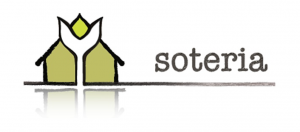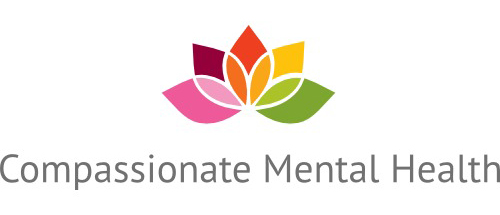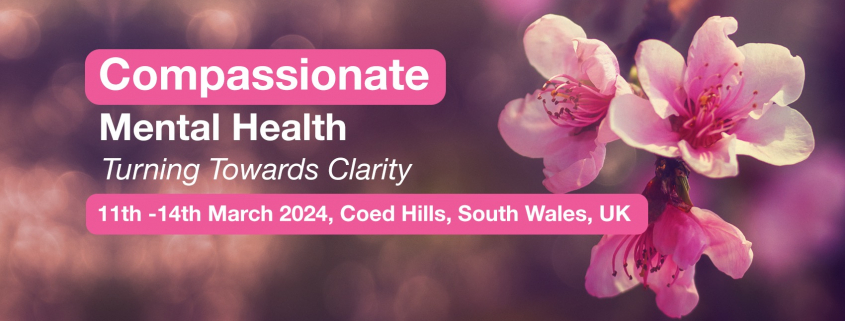Why we need more Soteria Houses by Brigid Bowen
I wrote this piece to deliver as a talk for the Soteria Network UK AGM in 2021 – online due to the pandemic.
Compassionate Mental Health is part a growing global movement of people and projects who are looking for an alternative to a purely bio medical model of mental health. We have held 13 in person gatherings since 2016 – learning retreats that are designed to disrupt the usual health and social care conference model, by bringing together all those interested in changing the mental illness conversation in a spirit of mutual enquiry and compassionate community. We also deliver compassionate connection (online) groups, and training.
Our central thesis is that people can begin to heal themselves and others through the power of community, connection, self care and solidarity. But crucially, we need more compassionate places where people experiencing distressing states of mind can feel safe, validated, deeply listened to, able to find meaning in difficult experiences, and connection with themselves and others.
Putting Relationships First
Soteria means deliverance, and comes from the Greek goddess for safety and recovery, and we need places of safety and recovery now more than ever.
Psychiatrist Loren Mosher pioneered the Soteria approach – putting relationships at the centre.
He said that recovery from psychosis was not only possible, but probable and to be expected.
When I was 22, I had my first psychosis. I would go on to have three more experiences of extreme states that landed me in hospital, but none were as bad as the first. I went in as a voluntary patient and, after refusing medication, experienced face down restraint and forced injection with first-generation antipsychotics on a locked ward. Some months later I came out with a walking stick, parkinsonian dystonia, mute and compliant.
Towards the end of that experience, with the help of a family GP who wrote to the Royal College of psychiatrists asking for a place in London where I might be “treated in a more holistic way”, I had my section 3 transferred to the Maurice Craig unit at Guy’s Hospital in London.
I went from the worst of care to a much better place that operated as a therapeutic community. There were no uniforms and staff were called by their first names.
There was group therapy, and I was free from locked doors to come and go and walk along the Thames. I used my benefits to go to flotation tank therapy, and went to volunteer for a charity sending supplies to Bosnia.
I felt safe to be myself again, and slowly began to re-emerge – not from my crisis – but from the way that it had been treated.
Self Regulation and Co-regulation
My dose of therapeutic community was consolidated by a year spent living in a Buddhist community. All I had to attend to was the rhythm of the day – waking early to meditate, chopping vegetables, helping lay the table, eating together, sharing chores, going to the local gym and sleeping.
My personal experience has never completely left me – and has been the driving force behind creating Compassionate Mental Health. Having experienced both good and bad within the psychiatric system, I am committed to working with others to help drive improvements as well as create alternatives. The Compassionate Mental Health Gatherings bring together the flag bearers for compassionate care, while modelling the warmth, welcome, and safety that were keynotes in the places that helped me.
I didn’t have an ideological position on being “for” or “anti” psychiatry, I just had first hand experience of two very different treatment approaches. I can say with confidence that force, disdain and neglect work far less well than a structured, purposeful therapeutic environment with compassion, routine and unconditional positive regard at its heart.
More than my own story, it’s the stories of other people I witnessed in far worse states than me that spur me on. And the stories I still encounter through the Gatherings from current and former patients, disenchanted mental health professionals, family and friend supporters, and sadly from bereaved parents too. Despite past hurt, all want to put aside differences and co-create future solutions, while making space for the difficult conversations that still need to happen.
Safe Spaces for Suffering and Joy
So, what are the features of a Soteria House? They are simple, safe, warm, homelike environments.
Joseph Berke, who worked with Laing, Mosher and others at Kingsley Hall – and went on to co-found the Arbours Association called these places “Safe spaces for suffering & for joy”
Joe Berke, wrote in his book “I didn’t have to go Mad here”:
“It has been my repeated observation that this journey and these experiences are not inherently harmful.
They can provide an opportunity for personal growth and development, as well as collapse and chaos.”
Joe said if the people working with altered states are not afraid of them, then a “natural stage of healing can happen.”
Loren Mosher thought that relationships came first, and that “the realities of life in the mental hospital thwarted the formation of such relationships where healing could happen.
The majority of staff in Soteria Houses were not mental health professionals. Mosher chose ordinary people who were recruited for their empathy and values and life experience and were extremely motivated with a strong sense of self. They had to be Interested, invested and enthusiastic – not mental professionals who, said Mosher, could often be “mentally blinkered.”
Psychiatrist Luc Ciompi – who worked with Mosher and whose Soteria House in Berne has stood the test of time, says:
Strong feelings are often at the bottom of psychosis – we need to be able to power down the emotions With interpersonal and physical environments where emotional relaxation is possible.
That’s not about adding in mindfulness or stress relaxation, but creating an entire environment and an ‘ease of handling’ in such a way that someone can begin to breathe again.
If this profound relaxation is possible – and at Soteria this is achieved through the environment, continuity in the relationships, and involvement with the family – then it affects the psychosis positively
This is compared with treatment as usual which is often marked by: isolation, safety and risk precautions, and high turnover of staff, many of who are stressed by impossible workloads And big doses of antipsychotic drugs which often come with big side affects
These approaches often heighten the tension of the patients, said Ciompi rather than calming them down.
And of course it’s not just psychosis. People who experience distressing states of mind, and might have been given a diagnosis of a personality disorder, also say they are excluded from meaningful support and left to fend for themselves.
Some have been criminalised while in crisis and trying to seek help, while others say mental health treatment has made them worse not better.

Whatever the problem, community is the answer
Many people say they still only get drug centred treatment and containment, rather than places where they can heal and grow. People in distress deserve more, and can benefit from the therapeutic approaches used in Soteria where they can be helped to re-form authentic, supportive relationships.
So, why do we not yet have Soteria Houses – or equivalent places – in every town? The first Soteria house was a carefully designed research project that limited its intake to young, newly diagnosed schizophrenic patients. Loren Mosher reflected that because it was outside of the system with limited intake which required careful screening to meet the research criteria, it was never seen as a real resource. He compares this with other projects with similar aims, but more closely embedded into the State mental health system, which fared better.
Mosher went on to spend time in Italy with Franco Basaglia, researching his landmark work in Trieste and concluded community crisis resolution is the best:
“In home intervention paradigms mute the side effects of mental health system interventions,” By minimizing institutionalization and its inevitable decontextualisation and medicalisation of the individual. If we intervene early we can limit the development of a view of that person – by the network and the system – as someone with a chronic illness.”
David Oaks from Mind Freedom wrote in an obituary when Mosher died:
“As a psychiatric survivor, I hope Soteria stories will be told and retold, again and again, because together they illuminate an exhilarating path toward deliverance from a mental health “system” gone mad.”
So what’s next? Dates for your Diary
Join us at our next Compassionate Mental Health Gathering – March 11-14 2024, Turning towards Clarity Book to join us here





Leave a Reply
Want to join the discussion?Feel free to contribute!